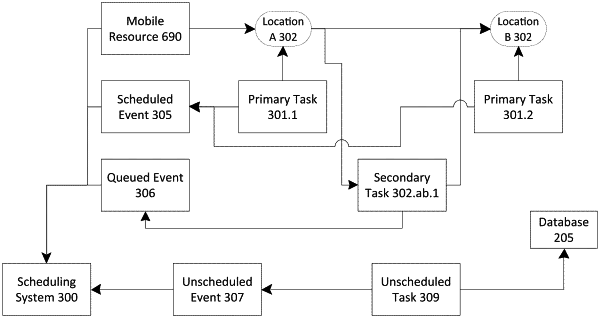|
1. A mobile resource dynamic location and data segmenting system in communication with at least one mobile resource which moves from a first location to an at least one second location wherein the at least one mobile resource executes a primary task at a first known location having a primary task completion time, the at least one mobile resource wherein the at least one mobile resource executes a secondary task at a second known location having a secondary task completion time and wherein the secondary task completion time is after the primary task completion time at the first location, wherein the secondary task completion time at the second location is scheduled in accordance to an at least one scheduling revenue or penalty parameter; whereby the at least one mobile resource has both a primary task storage with a primary product in the primary task storage and a secondary task storage with a secondary product in the secondary task storage; whereby the second known location is selected from the at least one second location, wherein the primary product is utilized at the first known location and the secondary product is utilized at the second known and further wherein the secondary task has a demand consumption projected record as a function of time and whereby a penalty for the demand consumption projected record as a function of time triggers the secondary task to become a primary task on a second mobile resource due to the scheduled secondary task completion time.
|
